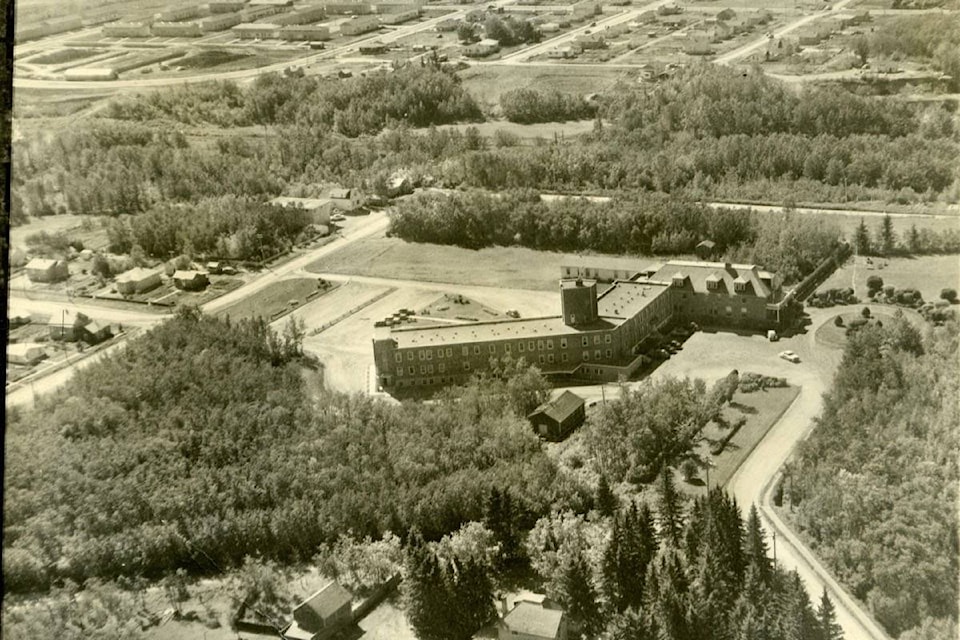With the ongoing COVID-19 pandemic, there is a lot of debate about the reopening of schools and how that can be safely done.
However, this year is not the first time in living memory that schools in Alberta have been closed and later reopened during a widespread epidemic.
There were various times in the past 100 years that schools in Red Deer and central Alberta were closed because of a widespread outbreak of polio.
Polio is a viral disease that has been around since time immemorial. However, for reasons not completely understood, it seemed to become more virulent about 100 years ago.
Initially, it seemed to strike the hardest with the very young. Hence, many referred to it as infantile paralysis. As the century progressed, the disease became more common among older children and adults.
Polio would generally appear in late summer or early fall. The first symptoms resembled the flu and included fever, coughing and gastrointestinal upset.
Stiffness and weakness of the muscles would then set in. In severe cases, there was extensive paralysis, often making it difficult, if not impossible, for the victims to breathe on their own. When the patients recovered, for many, at least some of the paralysis had become permanent.
The first outbreaks in central Alberta appeared in the years before the First World War. People blamed stable flies, mosquitoes and, sometimes, bad milk for the spread of the disease. Doctors had very little to offer in the way of treatment. Fortunately, the number of cases remained rare.
After a small outbreak in 1912-13, Red Deer did not have any reported cases for nearly 15 years. Then, in the summer of 1927, a significant outbreak hit. The first children to be afflicted lived in the Blackfalds and Lacombe area. Soon, there were cases in Red Deer as well.
The Red Deer schools were suddenly closed on Sept. 15. All gatherings of children, under the age of 18, were prohibited. Fortunately, there were no fatal cases in Red Deer. The schools were reopened on Oct. 3.
There were annual cases of polio after that, but the next epidemic struck in the late summer of 1935. Schools opened on Sept. 3, but had to be closed on Sept. 12. They were reopened near the end of the month.
One of the main treatments at the time involved the administration of convalescent serum, derived from patients who had come down with polio and later recovered.
However, since the treatment was generally only applied after people got sick, it was unclear how effective it was. Another treatment was to apply zinc sulfide nasally.
A major epidemic struck again in the summer of 1941. In mid-August, the provincial health authorities declared that all schools in Alberta would remain closed until the third week of September.
The number of cases ended up being somewhat less than expected. The authorities credited this to the schools being closed during the usual peak time for polio outbreaks (i.e., late summer and early fall).
The worst recorded polio epidemic in Alberta’s history started in the summer of 1952, but became particularly widespread and deadly in the summer of 1953.
In the latter year, the opening of schools was delayed until mid-September. Nevertheless, there was an alarming number of cases. It was often stated that it was the worst epidemic since the Spanish flu pandemic of 1918.
In Red Deer, the matron of the Red Deer Hospital asked staff not to talk about the number of polio patients in order to reduce panic.
Special isolation rooms were created for treatment. Meanwhile, the local theatres, sports facilities and the public swimming pool were closed. Tragically, there were eight deaths recorded in Red Deer and area before the epidemic finally abated.
Fortunately, in 1953-54, Dr. Jonas Salk developed an effective polio vaccine. In 1962, an oral vaccine developed by Dr. Albert Sabin became widely available.
The number of polio cases dropped dramatically. While polio has now disappeared in most of the world, several decades later, many former polio patients have been hit with a new serious and debilitating aliment – post-polio syndrome.
Red Deer historian Michael Dawe’s column appears Wednesdays.
